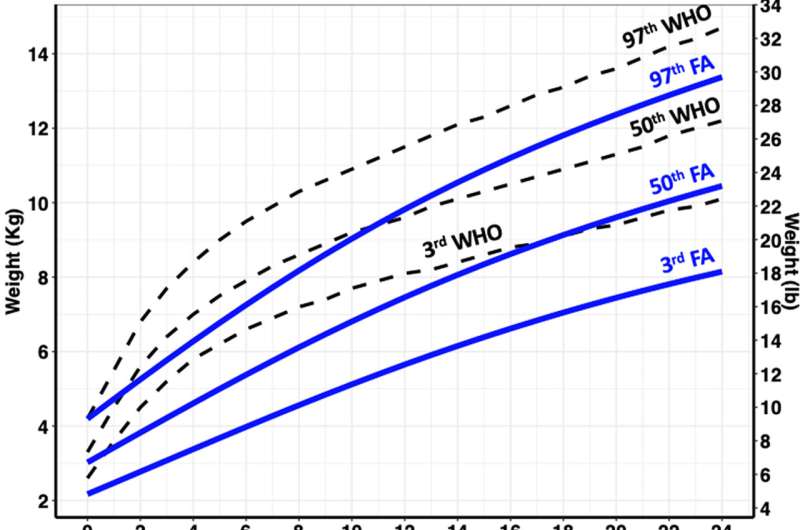This article has been reviewed according to Science X's editorial process and policies. Editors have highlighted the following attributes while ensuring the content's credibility:
fact-checked
peer-reviewed publication
trusted source
proofread
Study reveals typical growth patterns for children with Fanconi anemia

Published in the American Journal of Medical Genetics, a University of Minnesota Medical School study found that it is normal for children with Fanconi anemia to be shorter and thinner than other children. Fanconi anemia is a rare genetic condition affecting DNA repair that may lead to bone marrow failure, leukemia and other cancers.
"This information will help parents of children with Fanconi anemia understand that the poor growth and weight gain is not due to lack of nutrition or a hormone deficiency but due to the condition itself," said Brad Miller, MD, Ph.D., a professor at the U of M Medical School and pediatric endocrinologist with M Health Fairview.
"Having a growth curve specifically for children with Fanconi anemia can help providers make well-informed decisions regarding diagnostic testing and treatments and understand the impact of current and new therapies."
Using data from the Kidz1stFund Comprehensive Fanconi Anemia Center led by Margaret MacMillan, MD, and John Wagner, MD, professors at the U of M Medical School and blood and marrow transplant specialists with M Health Fairview Pediatrics, the research team developed new growth charts for children with Fanconi anemia.
Among boys with Fanconi anemia, the average height and weight for their respective ages coincide with the lower end of the general population curve—specifically the third percentile. For girls with Fanconi anemia, the average height aligns with the lower bounds of the general population curve, but the weight is more variable.
The research team recommends plotting children on Fanconi anemia-specific growth charts to guide better accurate growth expectations, evaluations, and treatment decisions.
Future research is recommended to collect growth data from a larger cohort of children with Fanconi anemia to validate the curves identified in this study. Additional research is also needed to understand better the reasons for poor growth and weight gain in the setting of Fanconi anemia and how that may lead to changes in long-term health.
More information: Crystal Barbus et al, Development of specific growth charts for children with Fanconi anemia, American Journal of Medical Genetics Part A (2024). DOI: 10.1002/ajmg.a.63554



















